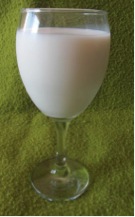Don Mercer
One of the most useful techniques for ensuring the safety of many of the foods we eat is “thermal processing”. As its name implies, this approach involves the application of heat. The combination of heating a food material to a certain temperature and holding it there for a specified period of time is the basis of canning and the processing of many liquid products, including milk.
Experiments in the late 1700’s showed that samples of meat sealed in glass ampoules and heated to a high temperature did not spoil - unlike unheated samples of the same meat. In the early 1800’s, Nicolas Appert developed the concept of canning as we know it today. However, it wasn’t until somewhat later that scientists began to understand what was actually happening. Many of the advances were the result of work done by Louis Pasteur in France during the late 1850’s. It seems at the time there were problems plaguing a local brewer whose fermentations were going sour. Pasteur was able to attribute the cause to tiny microorganisms that could be destroyed by heating the beer and then cooling it. His process was later applied to wine and ultimately to milk. This is rather ironic considering that we tend to associate Pasteur’s work to milk almost exclusively. There is some speculation that had there not been problems with the beer and wine, Pasteur may never have devoted his attention to addressing the situation. We now know the process as “pasteurisation”, and the science has move ahead from there.
Originally, when pasteurisation of milk was done in large vats or kettles, the recommended temperature was 63°C with a holding time of 30 minutes. There was the added problem of the time taken to warm the milk to the desired temperature plus the time for cooling the milk. Overall, there were some serious effects on the quality and taste of the milk. By increasing the pasteurisation temperature to 72°C, the time could be reduced to 15 seconds, thereby lessening the impact on quality experienced with the excessive times at 63°C. Advances in processing equipment made high temperature short time (HTST) pasteurisation possible. Even the times necessary to raise the temperature and cool the milk after heating were reduced to a matter of only a few seconds. Some processors may increase the pasteurisation time to 30 seconds as additional insurance that the milk has been adequately processed, without any noticeable quality or taste issues. A long section of tubing provides the necessary holding time for the milk at its required temperature.
Regulations require that records be kept of the temperature of the milk at the end of the holding section in the thermal processing unit. If the temperature falls below the required pasteurisation temperature, then a diverter valve automatically switches the flow of milk away from the downstream equipment and sends it back to the start of the process. This is a “critical control point” (CCP) designed to ensure the safety of the product that will ultimately find its way to the consumer. Another development has been ultra-high temperature (UHT) pasteurisation in which the milk is heated under pressure to as high as 150°C and held at this temperature for two to four seconds before being cooled.

Each food being thermally processed has its own inherent characteristics, as well as specific microorganisms which tend to be problematic. When thermally processing canned vegetables, the microorganism of concern is the bacterial spore-former Clostridium botulinum. Without proper heat treatment, the toxins it produces may lead to “botulism” – a rare but serious illness that can cause paralysis or death. Holding canned goods at 121°C for just over two-and-a-half minutes is sufficient to destroy the spores of C. botulinum. The most important thing here is to guarantee that the entire contents of the can, especially at its centre, are at the required 121°C. If the temperature is not high enough, there is a risk of potential contamination of the product. Special coloured dye or tape are available that can be placed on the outside of the cans to indicate if the proper time and temperature relationship has been achieved. Knowing how long it takes heat to penetrate to the centre of the can allows the processor to calculate the overall heating time before the cooling process can begin.
So far, we have looked at commercial food processing applications. But, how does this all relate to the average person? For those who preserve their own fruits and vegetables, the answer to this question is quite relevant. If instructions or recipes state that you must hold your product in a pressure cooker at a certain pressure for a specified period of time, then you must do just that. These are not merely suggestions – they have a definite purpose. You also need to make sure that your pressure cooker is functioning properly by following the manufacturer’s instructions, and making sure that the pressure relief valve is clean and operating freely.
A lot of this may sound rather scary and perhaps a bit intimidating. However, with the proper temperatures and times, as well as following recipes from reliable sources to the letter, you should be able to enjoy safe, high quality food long after your fruits and vegetables been harvested. Just remember as well not to skimp on the sugar in jams, nor reduce the amount of lemon juice that you are told to add - these all have a very good reason for being included.
Dr Don Mercer is Associate Professor in Food Science, Department of Food Science, University of Guelph, Guelph, Ontario N1G 2W1, Canada; e-mail: dmercer@uoguelph.ca
Permission to reproduce this article is greatly appreciated and acknowledged.
IUFoST Scientific Information Bulletin (SIB)
FOOD FRAUD PREVENTION